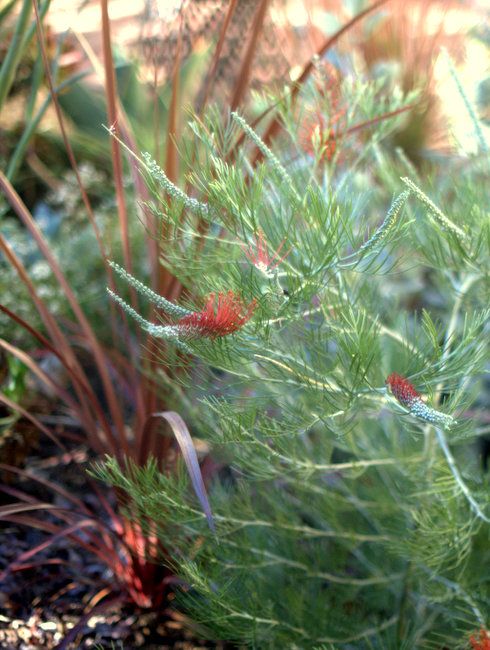
I spent most of October traveling, intermittently home just long enough to sweep up piles of ash and note that the customary accumulation of a summer’s worth of city grime on leaves had been augmented by heavy particulates from local wildfires. That smothering combination was especially troublesome for woolly, pubescent leaves like those of sideritis, some of which died, as opposed to the smooth, glabrous leaves of succulents like agaves, which could be easily hosed off.

The big tetrapanax leaves seemed especially challenged by the combination of grime and then heat. I tried hosing off the black shadow monster residue encrusted in the rice paper leaves’ venation (how about that season 2 of Stranger Things?), without much success, and then the 100+ heat wave finished off most of the leaves, crisping and curling them into old parchment just as the flowers started to form.
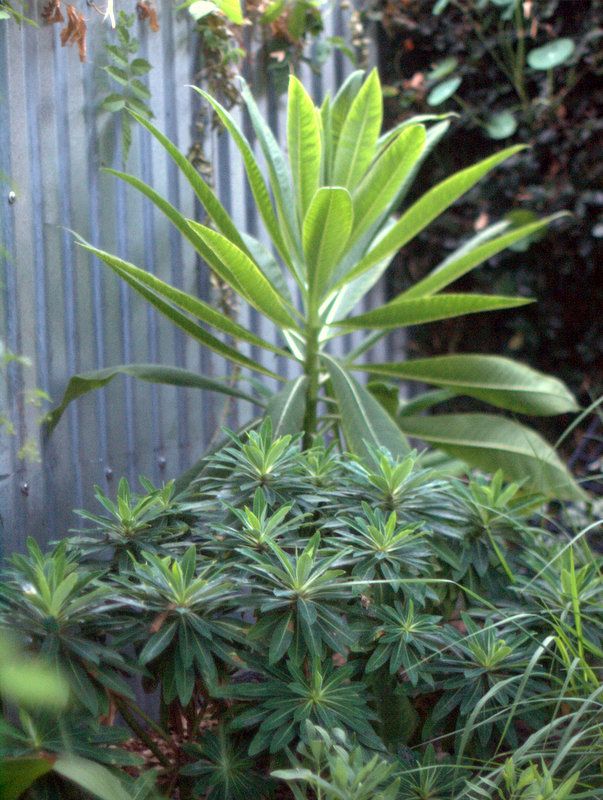
Even though I was absent most of October, it was easy enough to read the garden’s tea leaves and understand what a stressful time it endured without me. Lobelia fistulosa, tall and healthy when I left in early October, collapsed entirely in the Santa Ana wind conditions and high temperatures. In autopsy mode, studying its skeletal remains, I noted how it was bathed in strong sunlight as opposed to the morning sun/afternoon shade conditions in which it was planted. More tea leaves to read. It was then I realized my neighbor had cut back most of the overhanging canopy of his pepper tree while I was away. Rotten luck for the lobelia during a heat wave. This photo was taken last July with the caption: “Lobelia fistulosa, which looks healthy and on track to bloom next year.” Not on track after all, but now completely derailed. That Euphorbia stygiana had given up long before October. Euphorbias mellifera and lambii go to the head of the line as most reliable of the big euphorbias for my garden.
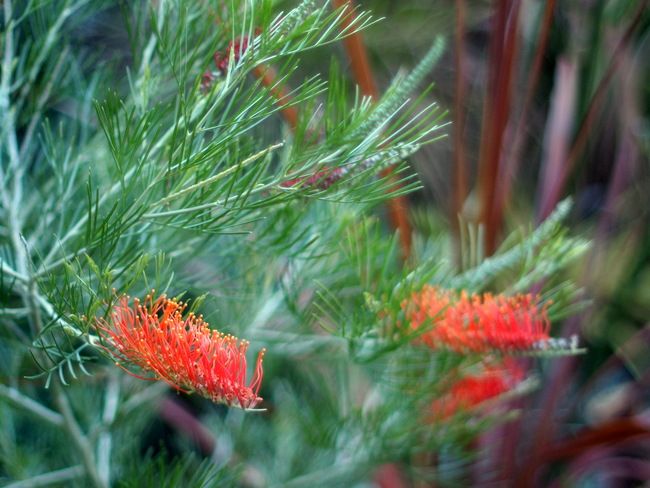
No triage needed here: Recently planted Grevillea ‘King’s Fire’ flourished while I was away.
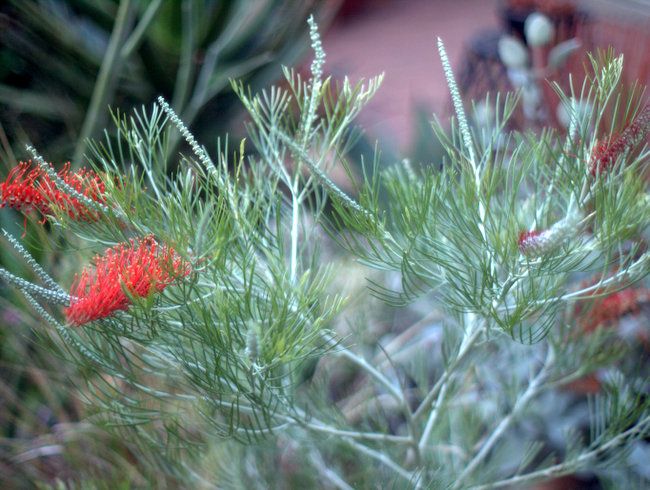
You know that newly in love phase when a stunning plant first joins the garden? That’s where I’m still at with this gorgeous redhead with the silver leaves.
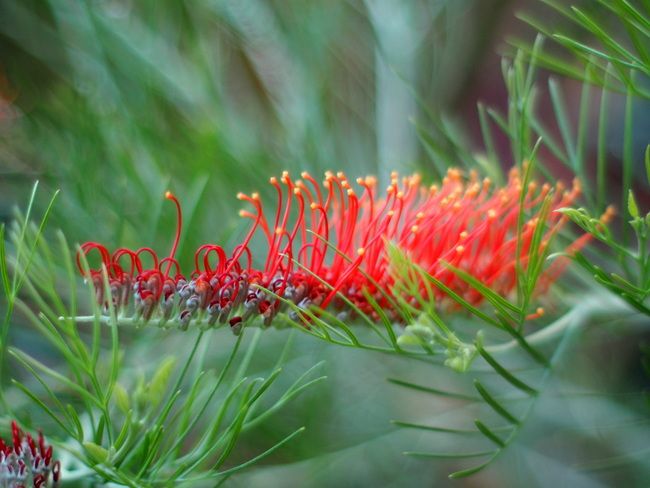

Grevillea ‘King’s Rainbow’ was just weeks in the ground before the heat wave hit yet doesn’t seem fazed at all. My kind of plant.
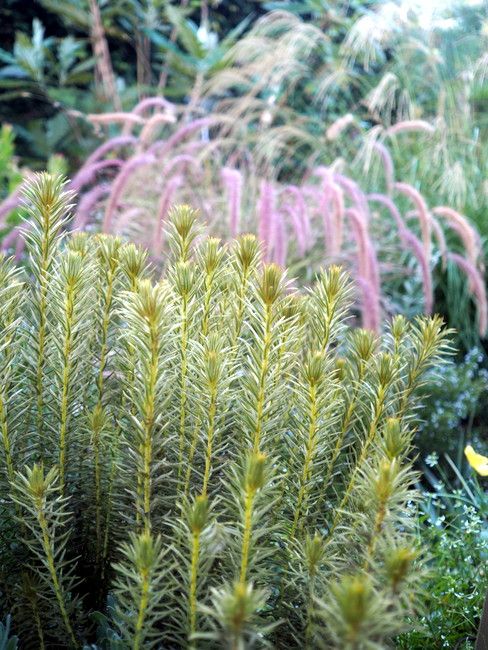
I always suspect Phyllica pubescens is just waiting for any flimsy excuse to die, but to its credit it did endure a very hostile October.
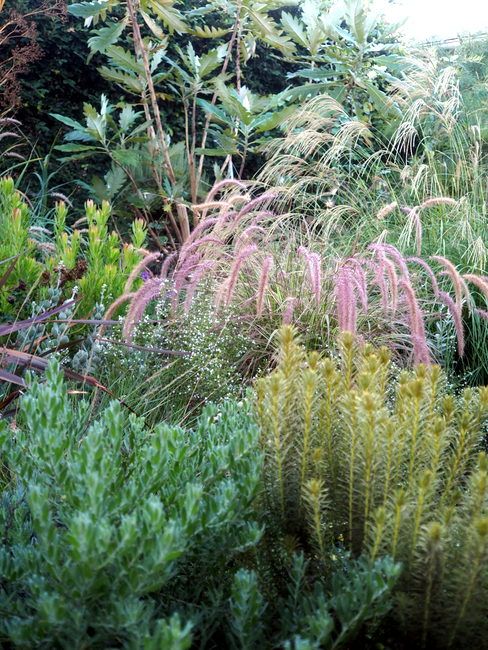
The bocconia in the back is sporting some seriously bare nekkid legs. As the fleshy leaves are continuously shed, they slide to the ground with a loud plop. Lots of plopping going on. Hopefully, its winter plumage will fill in soon.
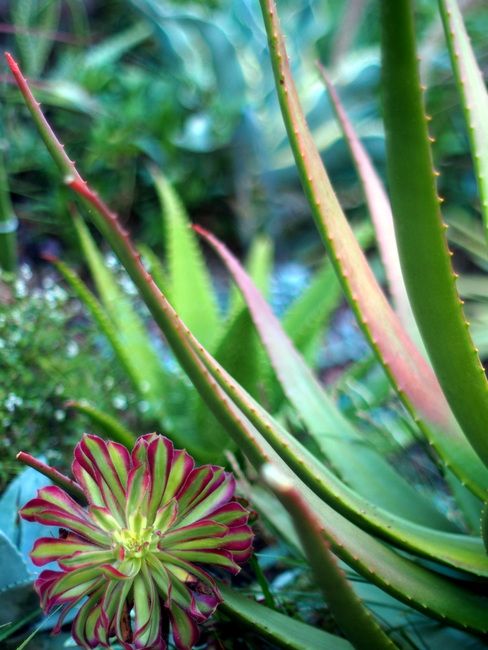
Leaves of Aloe cameronii became somewhat ruddier, not a bad thing at all. And I can’t believe I let Aeonium ‘Mardi Gras’ deal with full sun all summer, but I did, and it’s fine.
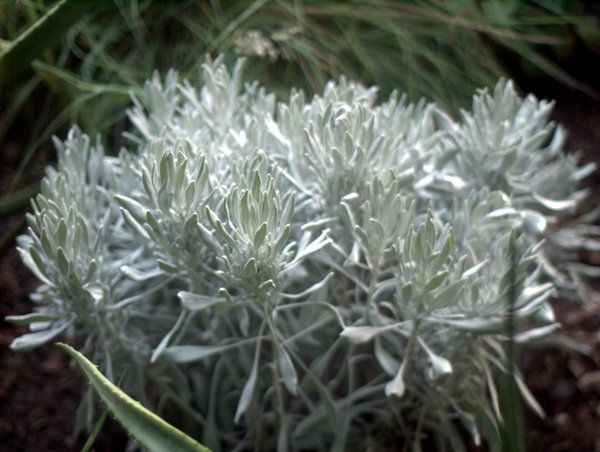
Senecio palmeri, shown here planted in September, shrunk by two-thirds. I cut off the dead growth and remain hopeful for the rest. I saw lots of this senecio at Santa Barbara Botanic Garden recently, where it was flourishing in full sun, so I know it’s tough. (SBBG has a great nursery, and I couldn’t resist bringing home Lephechinia fragrans ‘El Tigre,’ which I had just seen in a local SB garden the day before. I’ve mostly been steering clear of lepechinias since trying out L. hastata, which is much too big for my garden.)
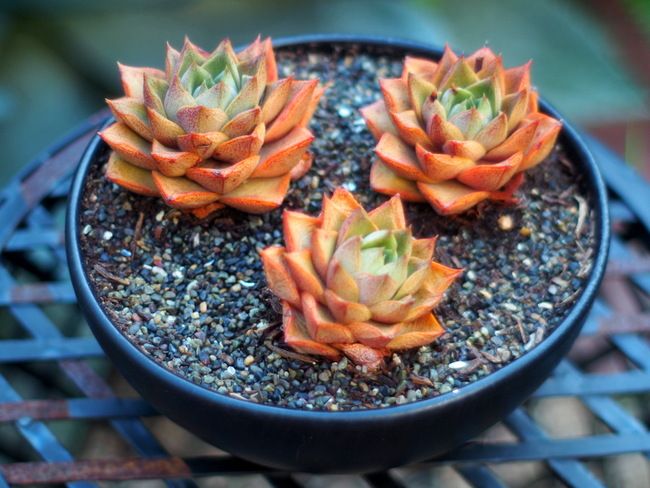
A shallow bowl of Echeveria purpureum purpusorum left in full sun looks none the worse for wear.
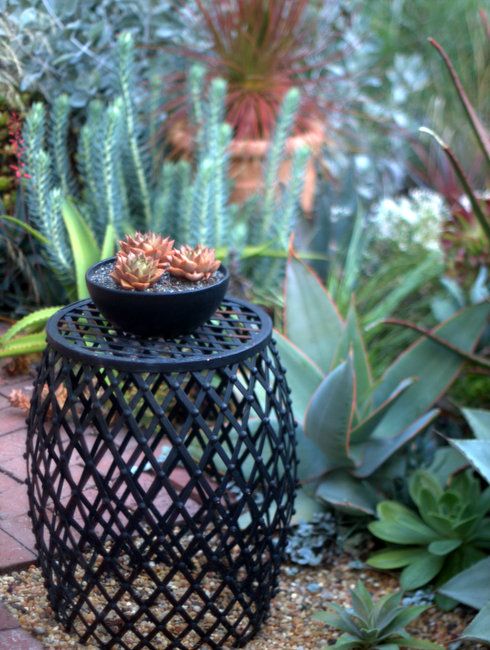

While some of my agaves showed damage, Aloe striata withstood the heat wave’s blast without blemish. The little silver leaves belong to Dichondra sericea, brought home in May 2016.

Like Aloe striata, the silver spoons kalanchoe is recommended for sun or partial shade. Even so, it sailed through the 100+ temps and dessicating winds and is now getting ready for winter bloom.
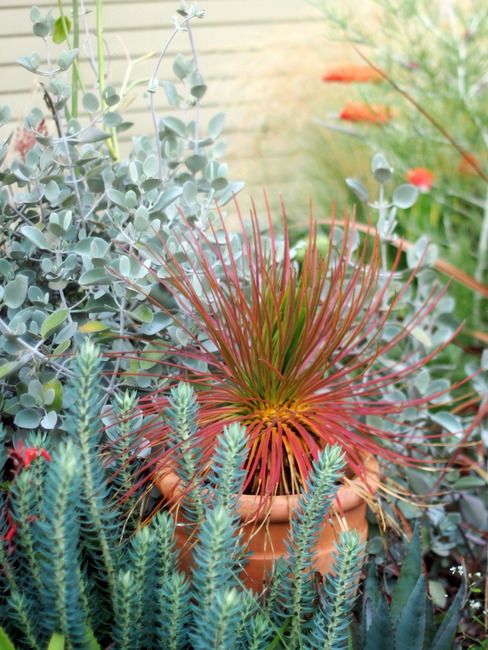
Agave geminiflora keeps coloring deeper and deeper. Again, not a bad thing. I’m so attracted by this ruddy contrast with silver that I dialed it up by adding for winter a ‘Red Planet’ cordyline with some rusty-colored aechmeas and pale Cotyledon orbiculata dug up from elsewhere in the garden.
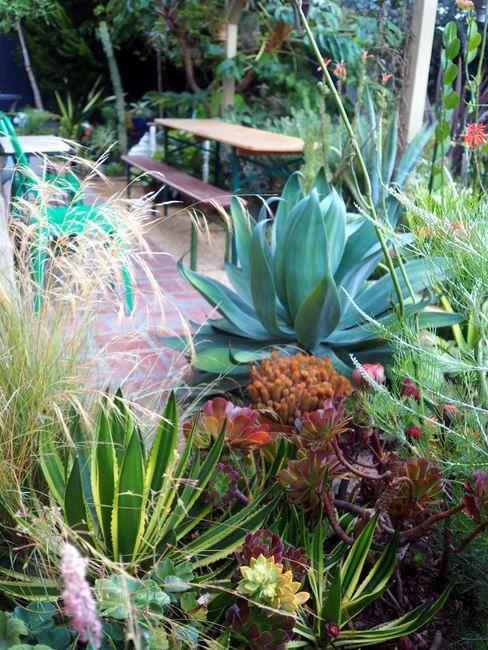
Agave ‘Blue Flame’ was showing leaf burn even before the heat wave, after I pulled off some pups and exposed that previously protected side to full sun. I cleaned it up a couple days ago, cutting off most of the burned leaves and cleaning out the debris that accumulated under its leaves, a nasty job. I felt as virtuous afterwards as if I’d cleaned out under the fridge. And then I had to offer that scratched arm to the phlebotomist yesterday for a routine blood draw. I don’t think he understood what “cleaning out an agave” really means.
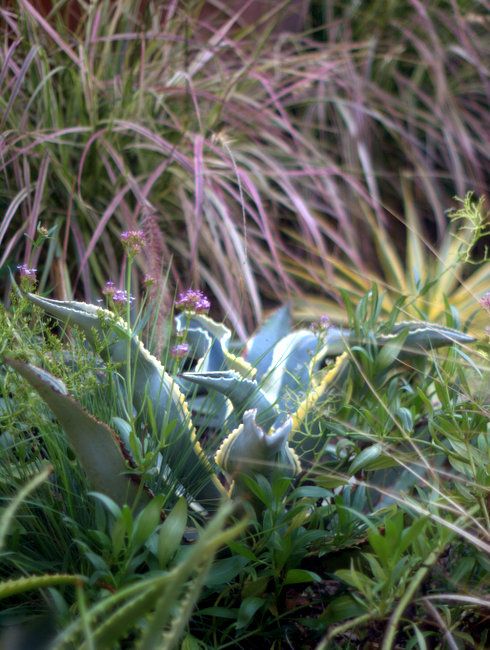
Another trouble child I fret over is Agave gypsophila ‘Ivory Curls,’ which is especially prone to leaf-tip burn. Maybe, in this instance, crowding it among other plants provided some measure of protection.
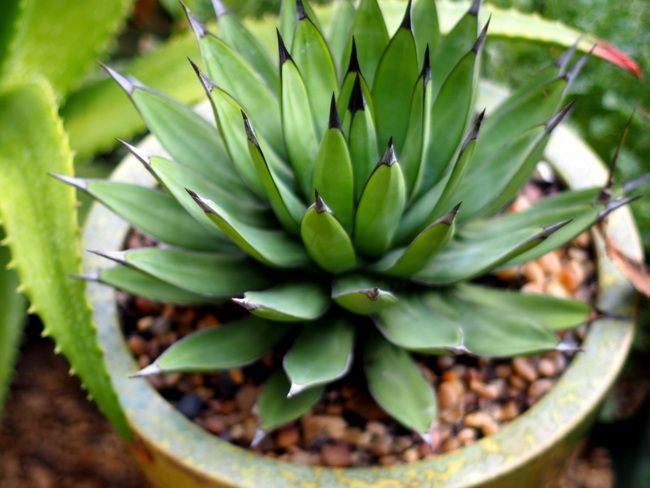
Agave ‘Royal Spine,’ which had burst through and shattered its previous pot, got a new home when the potted Adenanthos ‘Silver Haze’ succumbed to the heat. I had left the agave in its shattered pot all summer, which I justified as a form of open-air root pruning (or neglect, if you insist on looking at it that way).
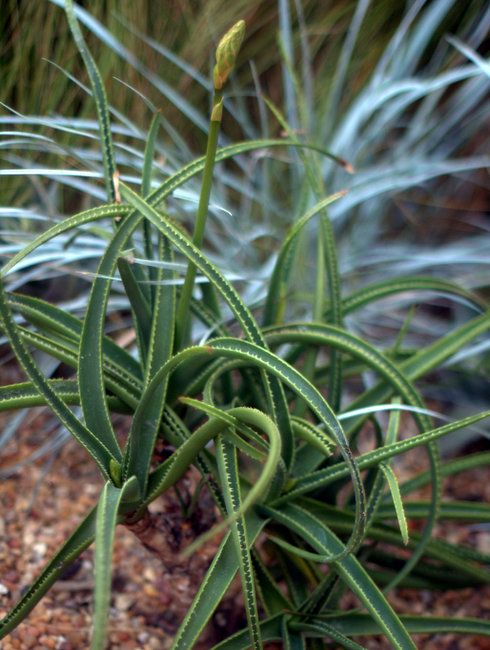
A grassy-leaved aloe hybrid, Aloe ‘Topaz,’ recently moved into more sun, is finally throwing its first blooms.

It was getting swamped mid garden but immediately responded to the increased air circulation and full sunlight on its leaves — which is basically the story of so many plants in my garden, which would prefer to live at the edge and not the interior. Unfortunately, there’s a fixed amount of “edgy” real estate available. Just yesterday I moved an Aloe camperi to a sunnier location. I do this a lot, growing new plants in less-than-optimal conditions until more accommodating digs open up.
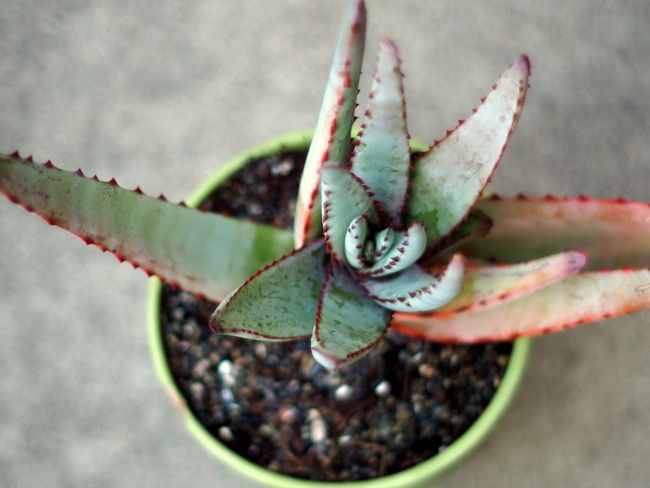
Aloe conifera hated being in the garden, but has been coaxed back to life in a container.

With the changing light, potted plants are once again on the move, like the variegated form of Kalanchoe beharensis brought out into the post-heat wave, softer autumnal light.
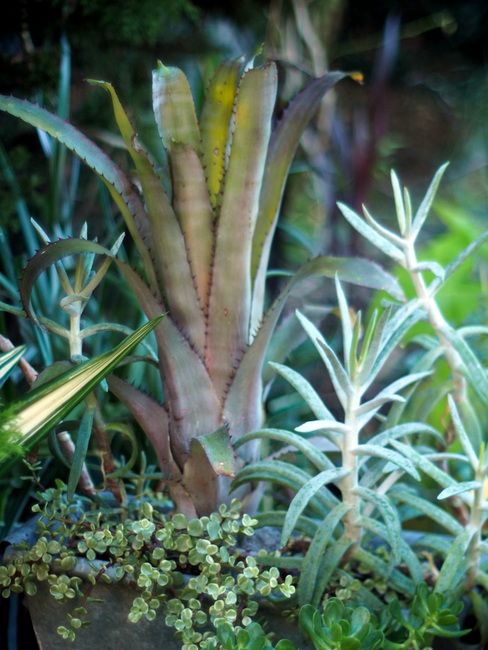
The past couple nights raccoons have been roughing up bromeliads planted in the ground, turning them over for slugs and snails. Aechmea bromeliifolia var. rubra in a container was unscathed.
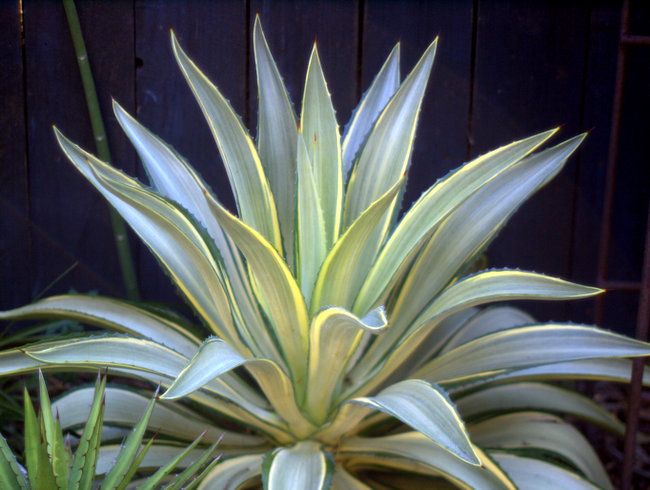
That’s probably enough plant talk! It just feels so good to dig around again in the cooler temperatures. And there’s talk of possible rain for Los Angeles the next couple days.
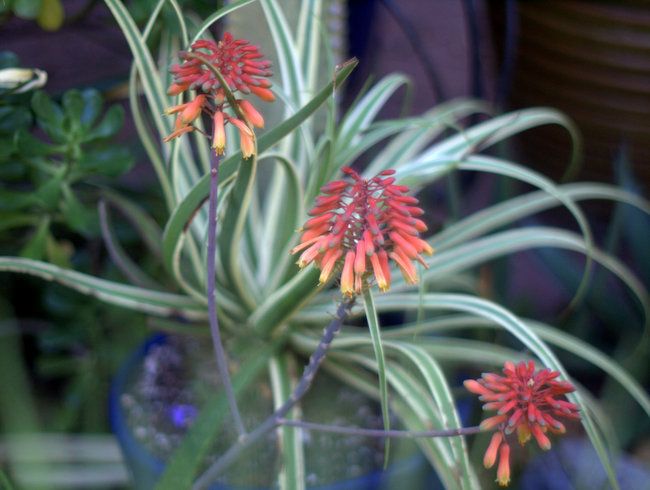
Have a great weekend.

As amateur plant collectors go, you are without parallel, Denise. I’m sorry for your losses but it seems that you have plenty of plants to offer solace. My most recent Phylica purchase perished during the October heatwaves but then I put it in a spot where, so far, everything has died. My bad. The space has now been filled by Sphaearlcea ambigua – a sure test for this reportedly tough plant.
Despite all that particulate matter in the air your plants seems to have weathered the assault. And who knows, washed into he soil it may add some benefit. Your plants and photography are stunning. As one who has never been much of a plant person I can see I have been missing out. Although I am sure many of those plants would find our climate here rather unfriendly. Your post has a very fall feel with all those orange tints and the gorgeous blooms of the grevillea hints of the season to come.
Small garden, big beauty.
‘Ivory Curls’ long established now seems to hold up to full sun without those brown tips, but the baby offsets do best in mostly shade.
Happy Autumn!
I’m astounded at the pretty minimal damage in your absence, given the searing conditions. (What an odd time your neighbor chose to prune, even apart from the impact on your plants.)
The mental picture of raccoons overturning bromeliads is indelible and completely unexpected.
Hope at least some of the promised rain arrived!
Is that my crush Agave ‘Ray of Light’ in the next-to-last image? What a stunner, and what a great shot. I also can’t stop looking at that lovely Aloe striata, and the subtle echo of its edges with the heat-reddened Echeveria. So much beauty.
@Kris, I’m seeing phyllica everywhere now, after being so hard to find. Prime locations in the garden are so hard to find, perfect sun, etc., but it deserves one. I need to tip-pinch mine at some point but have been putting that off.
@Jenny, that’s an interesting point about what the particulates add to the soil. I really should do a soil sample one of these days. And thank you for your kind words!
@Hoov, that’s good news about ‘Ivory Curls,’ thanks.
@Nell, that agave is A. desmettiana ‘Joe Hoak,’ which I should have captioned. It put up with the heat wave without a problem. Yes, so much beauty. This time of year makes me insatiable for it!
Haha – your described visit to the phlebotomist made me laugh… As always, your garden looks beyond fantastic! That kind of blue and red is one of my favorite color combos too. That King’s Red Grevillea gives me heart palpitations… so beautiful! Maybe it would survive on the lee side of my house…? Our last frigid winter yielded some stunning surprises in that microclimate, protected from the eastern Gorge winds. If I ever come across one, I will be sure to try it out.
:: the story of so many plants in my garden, which would prefer to live at the edge and not the interior. Unfortunately, there’s a fixed amount of “edgy” real estate available. ::
I wonder if the planting pattern in your garden becomes ever more fractal over time, as you work to accommodate this preference… Ideally, there’d be an annual overhead “crane shot” to document it. ;>
I know, Nell, I should be having drone shots by now! I think you might be right about a fractal drift 😉
There – finally made the time to enjoy this post. I know those who complain of our seasons, yet we do not even hit 100 or 90 in October right after moist, coastal air. Yet your plant choices mostly do great in spite…inspiring. All the work you do in your garden – even more inspiring.